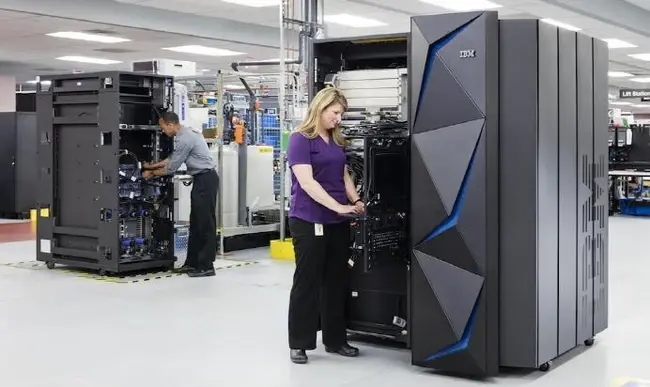
Some people might think that mainframe computers are a relic of a bygone era, and picture in their minds those vertically-oriented spinning disks which made the machines look like giant old tape players.
Those spinning disks were indeed tape players, the tape is what the data was stored on.
Things have moved on since then, now we all have access to cloud computing systems comprising thousands and thousands of servers in data centres here, there and everywhere.
No need to house a massive mainframe on your premises – or anywhere else for that matter. Who needs mainframes when you have access to so many servers on demand? Do mainframes even exist anymore?
Turns out mainframes do still exist and some people actually need them.
The company famous for making mainframes – IBM – is still cranking them out and even updating them. The most recent versions, released this week, are claimed by the company to be “cloud-ready” and more relevant than ever.
IBM has launched two new mainframes – the IBM z14 Model ZR1 and IBM LinuxONE Rockhopper II.
Some experts say that a mainframe is significantly cheaper to buy and run than a server stack which has similar performance levels.
A mainframe is a type of server, but its construction is said to make it faster and more capable of running scalable software and dealing with massively parallel operations.
IBM z Systems servers are said to dominate the mainframe market with 90 per cent market. This would not surprise those who wonder why anyone would want to make them in the first place.
For IBM there's every reason to keep building mainframes. For one thing it's become an iconic emblem for the company. But more importantly, the company claims mainframes can deal with today's computing challenges more effectively.
In the era of digital business, the mainframe remains for many the most stable, secure and mature environment to support IT initiatives including the proliferation of blockchains, says IBM.
The company claims 87 percent of all credit card transactions and nearly $8 trillion in payments a year are processed on mainframes. Furthermore, the platform manages 29 billion ATM transactions each year, equivalent to nearly $5 billion per day.
“If you're traveling by plane you can thank a mainframe, as they are also responsible for processing four billion passenger flights each year,” boasts IBM. They also argue it's critical in a world of increasing cybersecurity concerns.
According to Gemalto's Breach Level Index, of the nearly 10 billion records breached since 2013, only 4 per cent of the stolen data was encrypted and therefore was rendered useless to hackers.
IBM claims its new mainframes are capable of processing over 850 million fully encrypted transactions a day on a single system.
Moreover, the new mainframes do not require special space, cooling or energy, but still provide what IBM says is its “pervasive encryption and Secure Service Container technology for secure data serving at massive scale”.







Comments ( 0 )